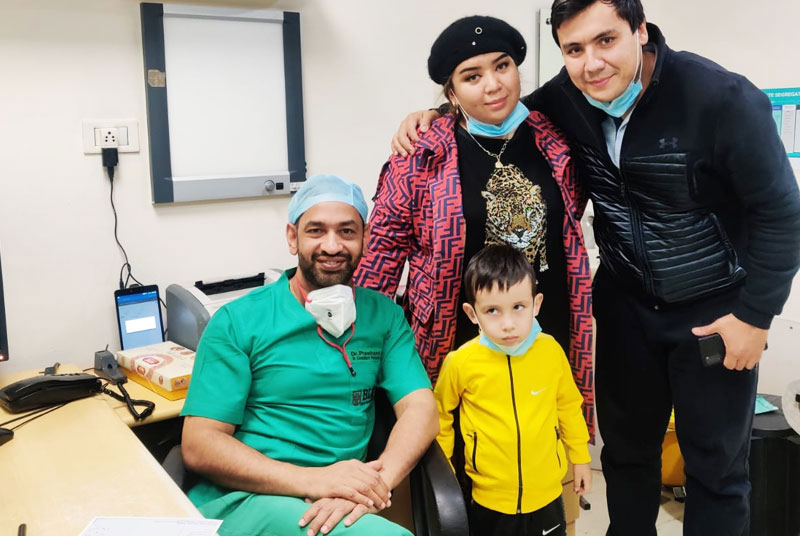Thoracosopic surgery is a type of minimally invasive surgery that is appropriate for children who require surgery for a variety of chest diseases. Today, a variety of straightforward and complicated surgical chest problems are regularly treated with thoracoscopic. Small incisions allow for minimally invasive surgery, which prevents damage to the muscles and nerves of the chest wall. On the other hand, huge incisions like those utilized in open surgery are uncomfortable and may eventually result in chest wall deformities.
During a thoracoscopic surgery, to see the structures inside the chest, the surgeon uses a thorascope (a small tube with an eyepiece that the surgeon sees through during surgery) and/or an endoscope (a small video camera).
The surgeon can now do procedures that would often require big thoracotomy incisions by using an endoscope to view through them. In order to undergo surgery, patients must be put under general anaesthesia in an operating room.
What are the advantages of thoracoscopic surgery in children?
On the contrary, large incisions as used in open surgery are painful and can cause chest wall deformity in the long run. Patients who have had minimally invasive surgery report the following outcomes when compared to those of regular surgery:
Reduced postoperative discomfort
Reduction in hospital stay
Faster healing and return to work
Less bleeding and a lower chance of infection are two other advantages.
How does thoracoscopic surgery in children work?
Thoracoscopic surgery is carried out by pediatric laparoscopic surgeon. During this procedure, a small incision is made to allow the surgical team to introduce a trocar into an intercostal space. Pumping carbon dioxide into the thoracic cavity creates an interior area for the surgeon to work by separating the body wall from the organs. The surgeon next inserts a thorascope and/or endoscope to view the structures of the chest. The use of tiny instruments is made possible by a number of additional incisions or tiny ports.
For whom is minimally invasive surgery appropriate?
A minimally invasive procedure can be used to perform almost all conventional thoracic procedures.
If thoracic surgery needs to be done, a minimally invasive surgical approach is the first that is considered. However, some procedures are still best carried out using the conventional “open” method. Your surgeon will thoroughly examine you to decide the safest surgical procedure to be used to treat your ailment.
Various thoracoscopic surgery procedures:
Dr. Prashant Jain, one of the finest pediatric surgeon in Delhi, has had great success in removing chest malignancies using minimally invasive surgery. He also performs a few other procedures listed below:
Mediastinal tumor removal
Mediastinal cysts removal
Lung malformations
Empyema
Lung biopsy
Spontaneous Pneumothorax
How can I get a thoracoscopic surgery evaluation?
Your physical exam and treatment choices will be discussed when you visit the laparoscopic surgeon. He will go over the advantages and possible drawbacks of the surgery that is suggested for you.
Preoperative exams typically include:
Blood test
Pulmonary function test
MRI
Electrocardiogram
Depending on the kind of treatment being performed, your surgeon will decide if any extra preoperative testing is required. A cardiologist’s visit will be arranged if a cardiac (heart) assessment is required.
You will consult with an anesthesiologist as part of your preoperative evaluation. During this time, you will talk about postoperative pain management and anesthesia.
In Delhi, Dr. Prashant Jain is a well-known pediatric laparoscopic surgeon. Call (+91) 8766 350 320 to schedule an appointment and get all your questions answered from the expert.
 :
https://www.pedsurgerydelhi.com
:
https://www.pedsurgerydelhi.com












